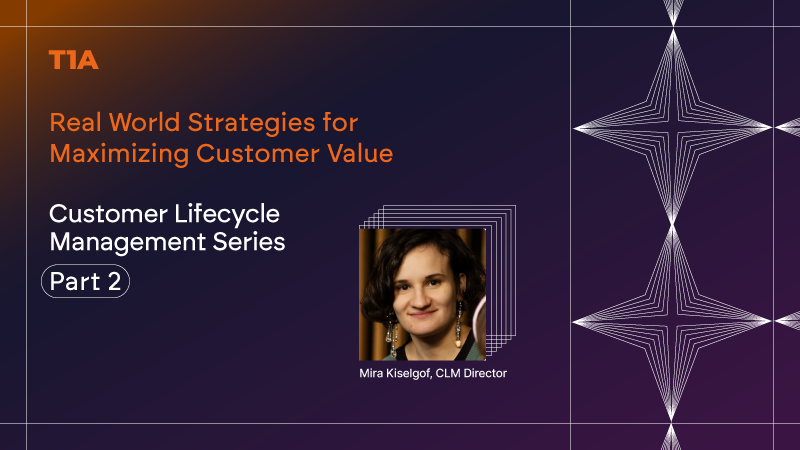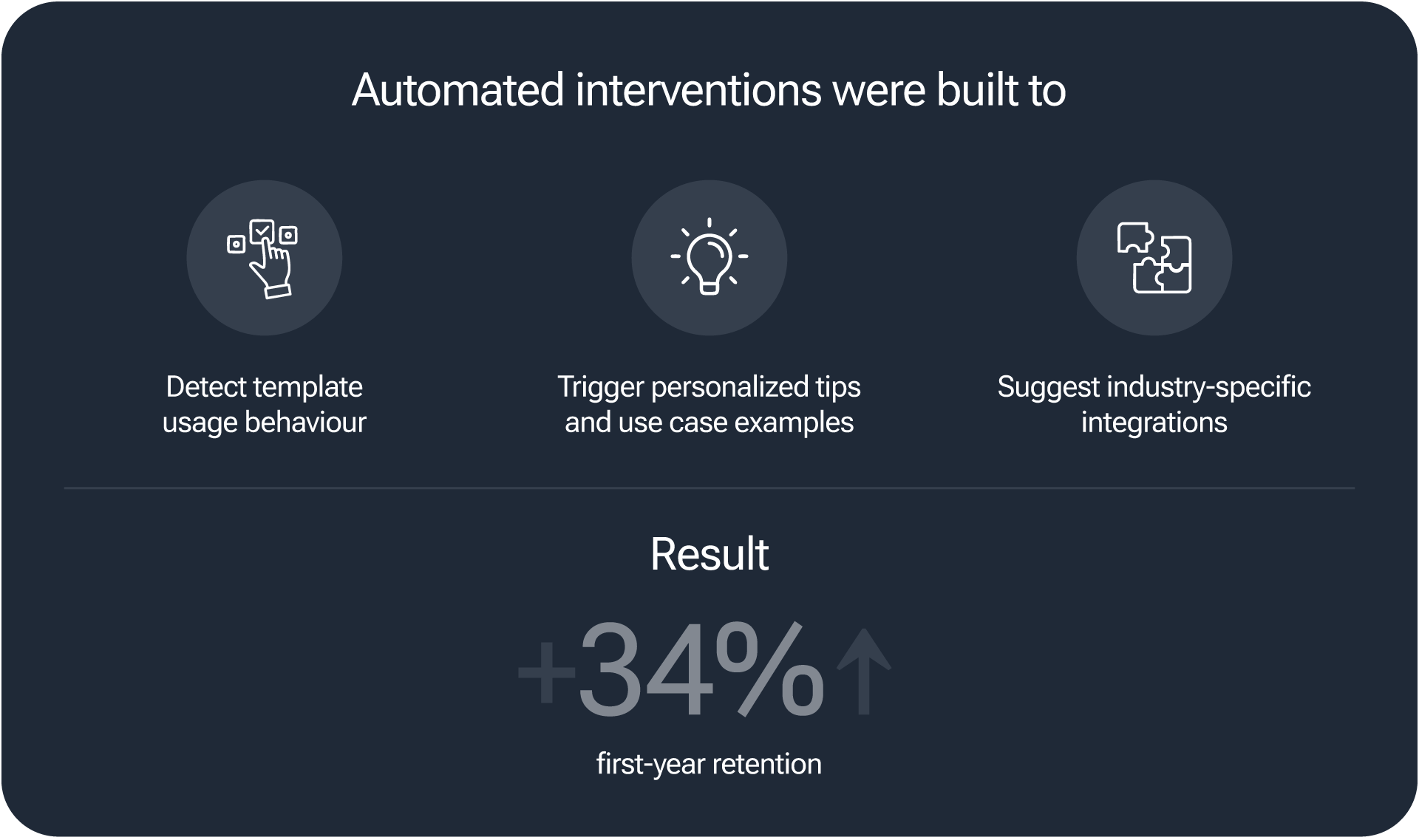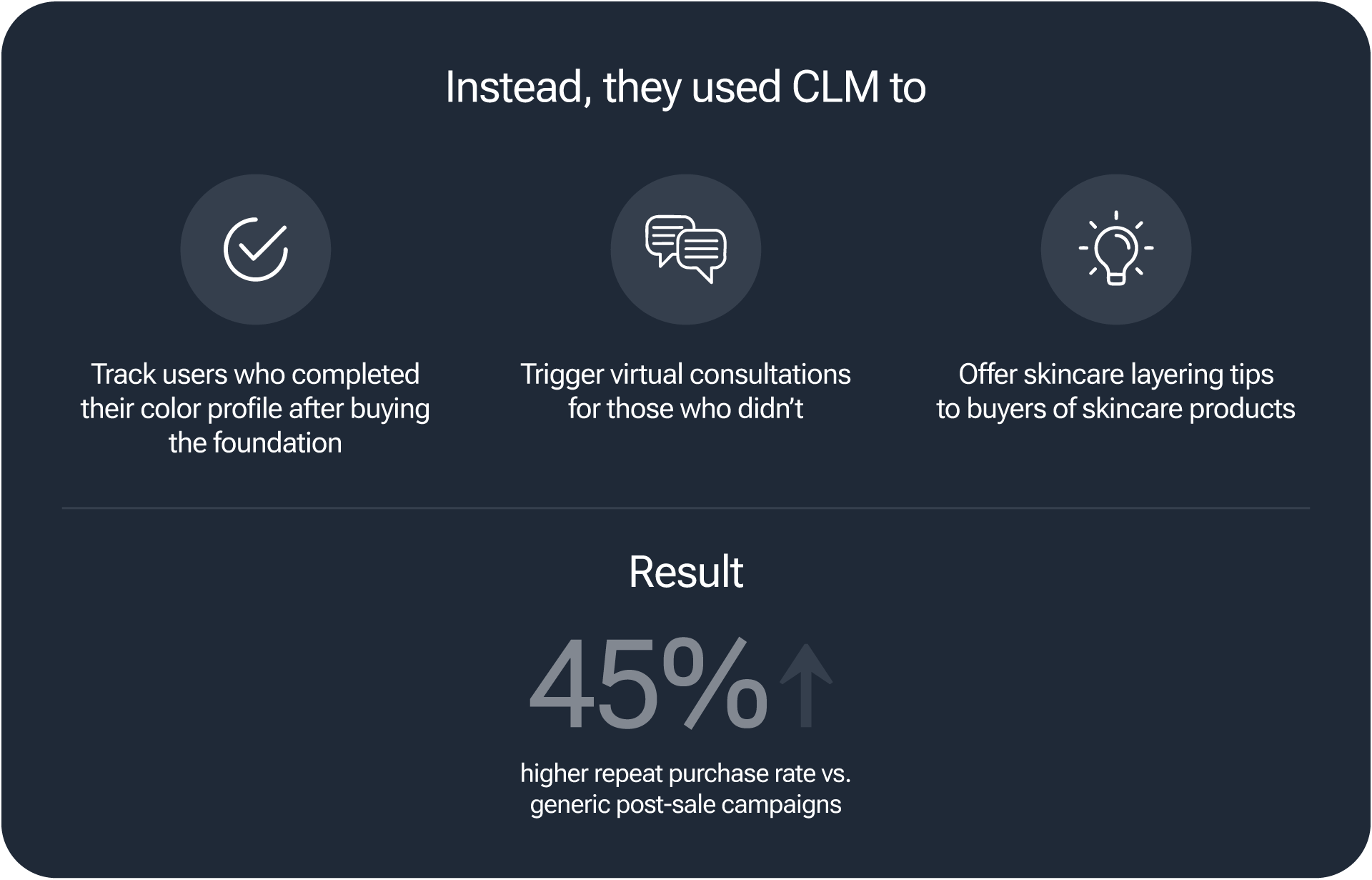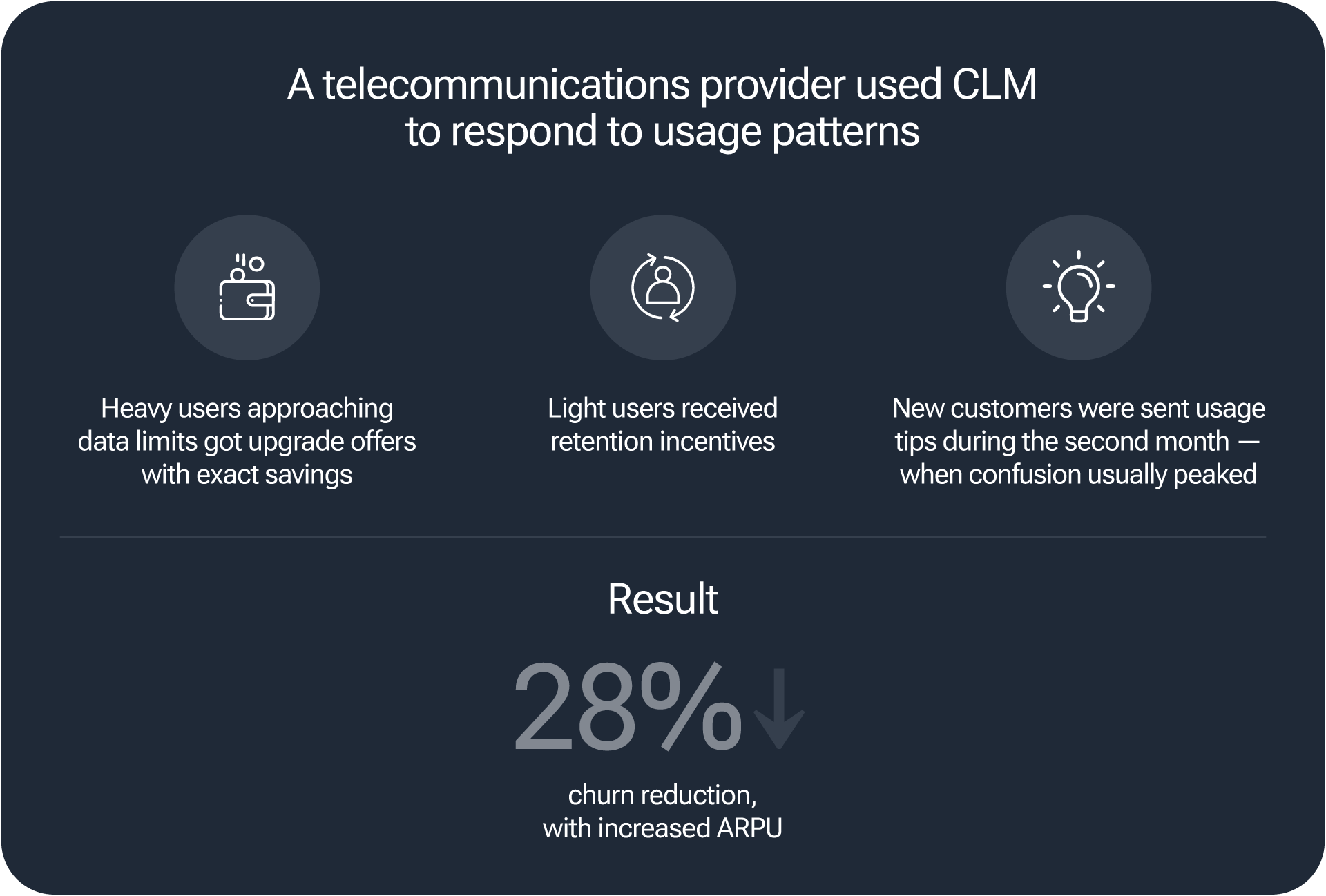


If you missed Part 1, read: What is CLM and How it Differs from CRM and Martech
Many organizations implement CRM systems or launch marketing campaigns, but still struggle to connect customer interactions into a seamless journey. The missing link? Behavior-based orchestration – the heart of Customer Lifecycle Management (CLM). In this second article, we move beyond definitions and dive into how CLM works in real life – through companies that applied it to solve critical business challenges.
Let’s start with a practical example. A B2B software company noticed that 40% of new users stopped logging in after the second month. Their CRM showed the data. Their marketing team launched re-engagement emails. But the real issue? New users weren’t reaching their “aha moment” during onboarding. This is where CLM steps in. With CLM, they designed behavioral workflows – tracking feature adoption, prompting in-app tutorials, and scheduling human outreach at the right moment. The result? A 30% increase in active users by month three.
🔍 CRM captures what happened. CLM designs what happens next.
Traditional marketing often focuses on running recurring marketing campaigns, measuring opens, clicks, and conversions – but CLM focuses on progression across the lifecycle. Take this real example:
A SaaS company discovered that users who integrate with two or more applications in the first 30 days have a 60% higher retention rate. Instead of a generic series of “welcome” messages, they trigger specific integration tutorials - all personalized according to the user’s goals stated during the sign-up. That’s CLM: empowering customers to succeed based on their behavior.
Let’s break down how different industries are turning CLM strategies into measurable customer impact.
A document management platform analyzed early-user behavior and found that users who completed document templates in the first 7 days were 80% more likely to renew.

A beauty retailer didn’t stop at the “thank you for your purchase” email.

A telecommunications provider used CLM to respond to usage patterns:

Behind every successful CLM program is a MarTech stack that enables data-driven behavioral decision making.. A music streaming service doesn’t just segment users by genre preferences. It tracks listening patterns to predict moments of disengagement, then delivers custom playlists to keep users exploring.
This is customer experience continuity – powered by behavioral triggers, AI, and well-integrated tools.
If you’re inspired by these use cases, here’s how to begin mapping your own CLM approach:
1) Map your customer’s critical “success moments” (e.g. first login, first meeting scheduled, first purchase)
2) Identify friction points and drop-offs (where do customers usually churn or stall)?
3) Design responses based on behavior, not static data (use engagement data to communicate with your customers)
4) Track lifecycle progression metrics beyond traditional performance metrics (understand how the customer is moving through lifecycle stages)
5) Choose MarTech stack that aligns with your CLM strategy
Customer Lifecycle Management is a discipline that brings marketing, product, and customer success into alignment. When done right, it transforms disconnected activities into a unified experience that grows loyalty, revenue, and advocacy.
📩 Want to explore how CLM could solve a challenge in your organization? Let’s talk! Our team at T1A has implemented CLM strategies across sectors — and we’re ready to help you do the same.